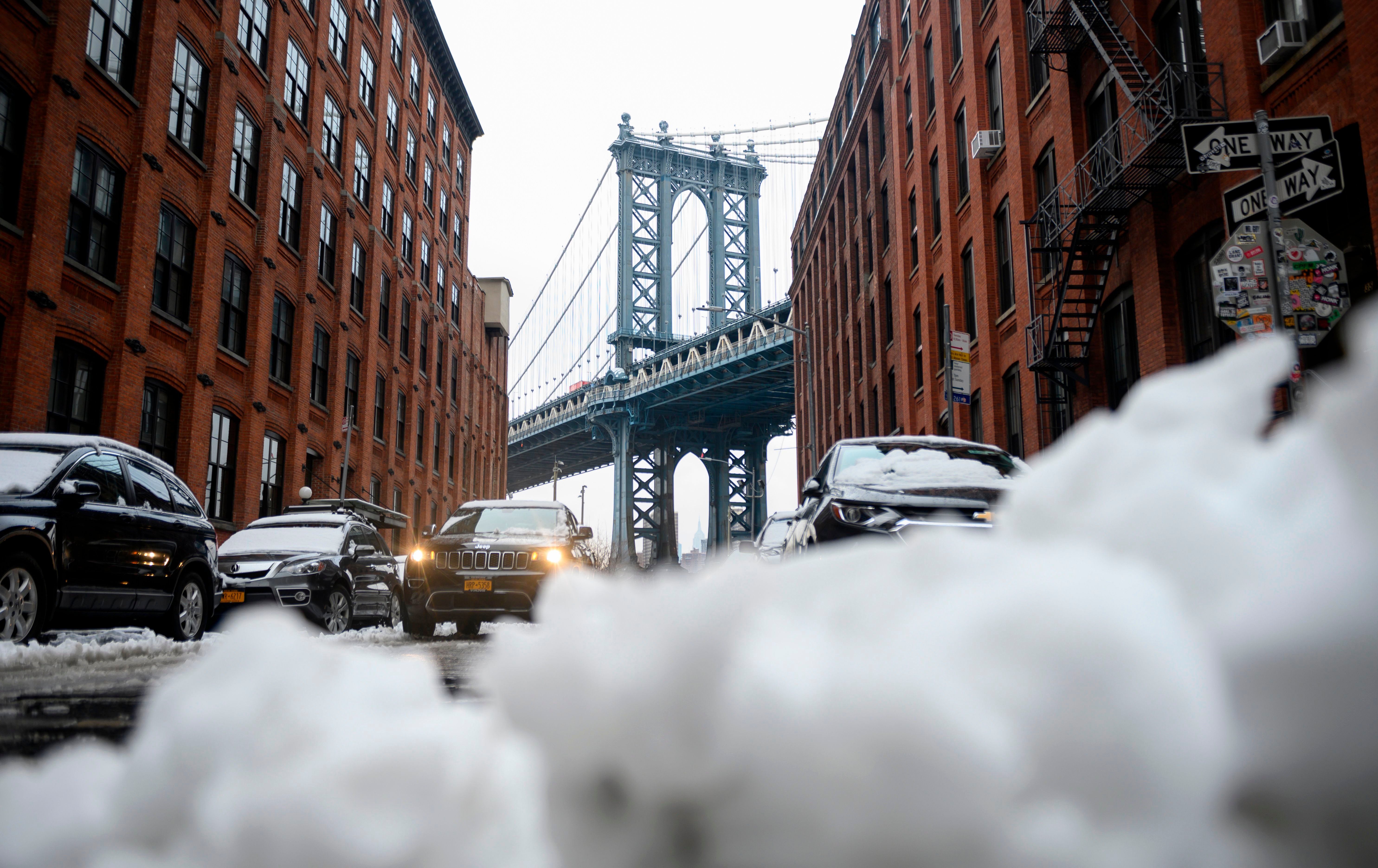States declare emergency as biggest snowstorm in years rolls towards New York City
Two to three inches of snow will fall per hour

Your support helps us to tell the story
From reproductive rights to climate change to Big Tech, The Independent is on the ground when the story is developing. Whether it's investigating the financials of Elon Musk's pro-Trump PAC or producing our latest documentary, 'The A Word', which shines a light on the American women fighting for reproductive rights, we know how important it is to parse out the facts from the messaging.
At such a critical moment in US history, we need reporters on the ground. Your donation allows us to keep sending journalists to speak to both sides of the story.
The Independent is trusted by Americans across the entire political spectrum. And unlike many other quality news outlets, we choose not to lock Americans out of our reporting and analysis with paywalls. We believe quality journalism should be available to everyone, paid for by those who can afford it.
Your support makes all the difference.More than 50 million Americans from the Mid-Atlantic to northern New England are preparing for a major winter storm that could bring the biggest snowfall in years to New York City.
The five boroughs could see in excess of a foot of snow fall in just 24 hours, with Mayor Bill de Blasio warning New Yorkers to take the storm seriously.
“We have not had a lot of storms like this in the last few years, thank God. We've seen much less snowfall than we did a few years back,” said the mayor on Tuesday. “So, this could be the biggest storm in several years.”
The major nor’easter could dump at least between three and six inches of snow over an area spreading from Maine to Virginia and far into Ohio.
The most severe snow accumulation will cover large areas of eastern Pennsylvania and the Hudson Valley, with totals up to two feet.
The governors of Pennsylvania and New Jersey have declared states of emergency, telling residents to stay home, if they can. New York Governor Andrew Cuomo says he expects to do the same for counties north of New York City from 6pm on Wednesday.
The quick pace of the storm sees it pass along the Interstate-95 corridor in just 24 hours, but it will still drop two to three inches of snow per hour in places.
There is a widespread threat of power outages across northern New Jersey, the New York suburbs, Connecticut, and Rhode Island.
In New York City, the mayor has said that with the advent of remote learning during the pandemic, there would be no snow day for the students at the city’s public schools, but in-person tuition will likely be suspended on Thursday.
Testing for Covid-19 at city clinics will be halted for about 24 hours, but the mayor said the storm will not affect the roll-out of the coronavirus vaccine.
With blizzard-like conditions possible, people have been asked to avoid driving if possible.
The storm is a further blow to the city’s restaurants who will suspend outdoor dining for the duration, just two days after losing permission to serve diners inside at 25 per cent capacity, due to rising cases of Covid-19.
With so many restaurants having constructed shelters to allow for all-weather dining on the sidewalks and in parking spaces, there are concerns about whether they will affect snow removal. Owners have been instructed to remove all furniture and equipment, and minimise their footprint where possible.
The city sought to reassure owners that the sanitation department, which is responsible for snow removal, has a variety of equipment at its disposal, and has planned ahead, mapping out where these structures impede the roadway.
In January 2016, snow accumulation of 27.5 inches was recorded in Central Park and New York all but ground to a halt, with many subway services suspended and private vehicles banned from the streets as snowplows fought to keep roadways clear.
Despite all the experience that the city has for dealing with winter storms, sometimes timing can be everything.
When six inches of snow fell just before the evening rush hour on 15 November 2018, New York City and northern New Jersey were paralysed by falling trees, car crashes, and gridlocked traffic that stopped snowplows from doing their job.




Join our commenting forum
Join thought-provoking conversations, follow other Independent readers and see their replies
Comments